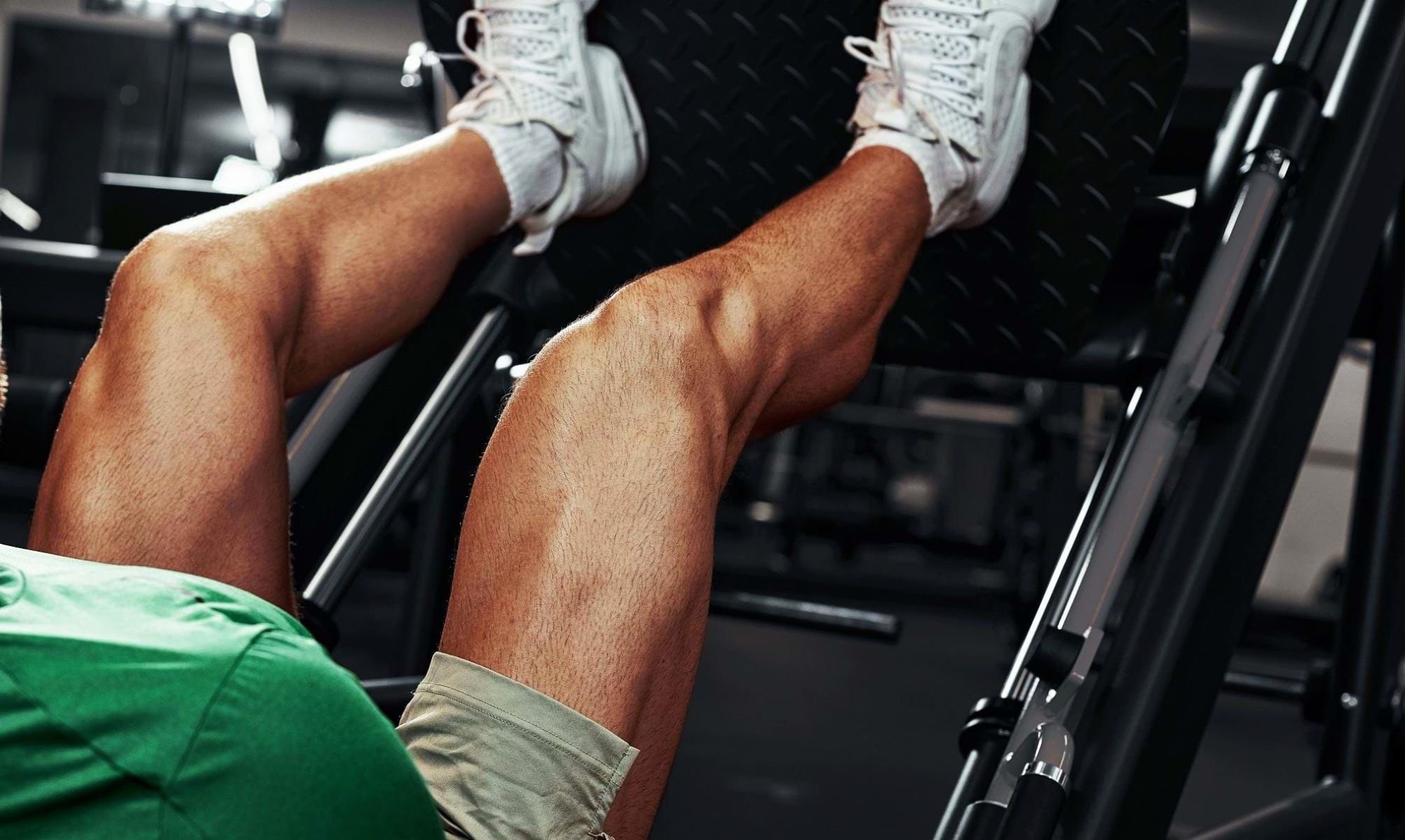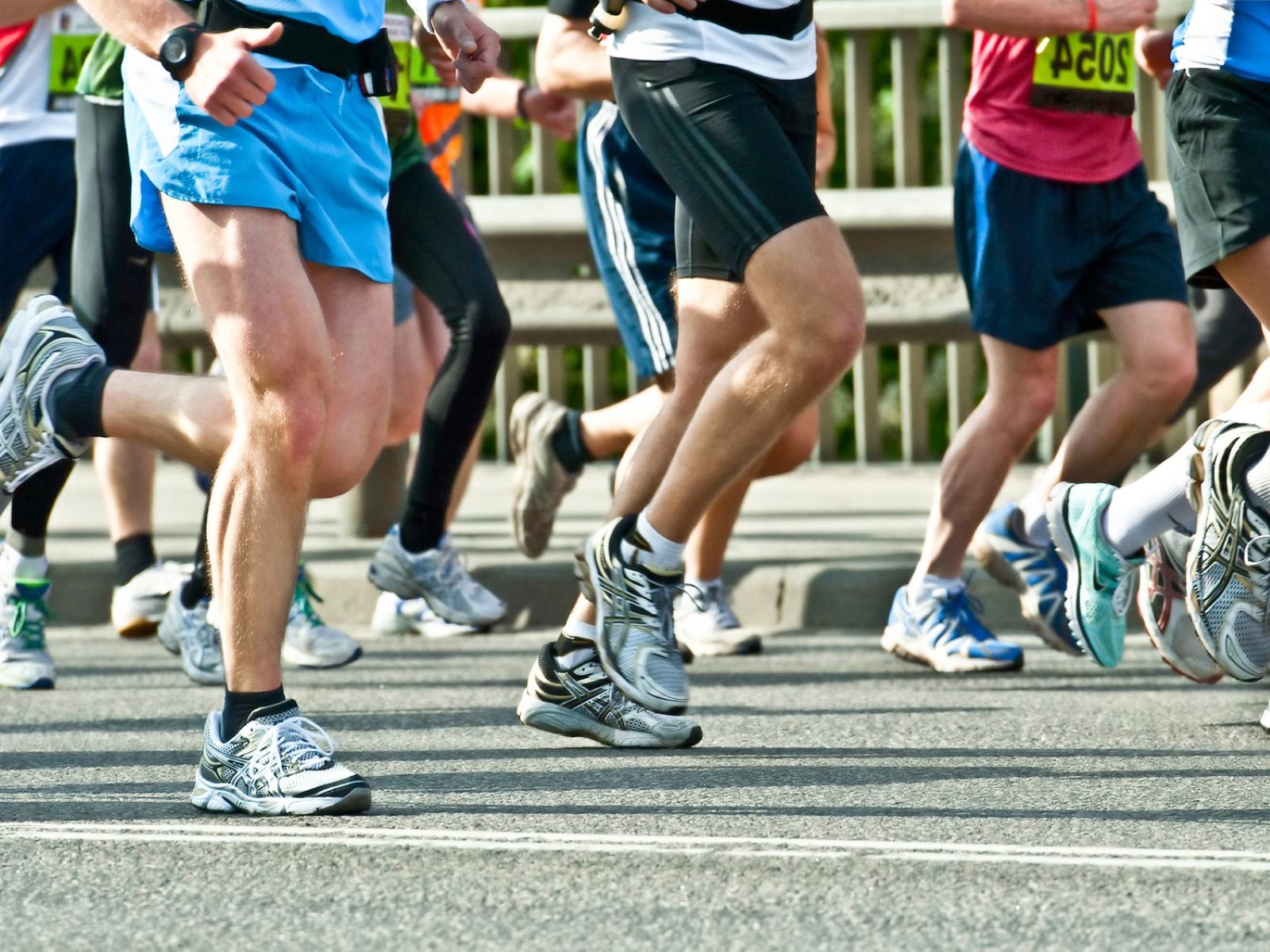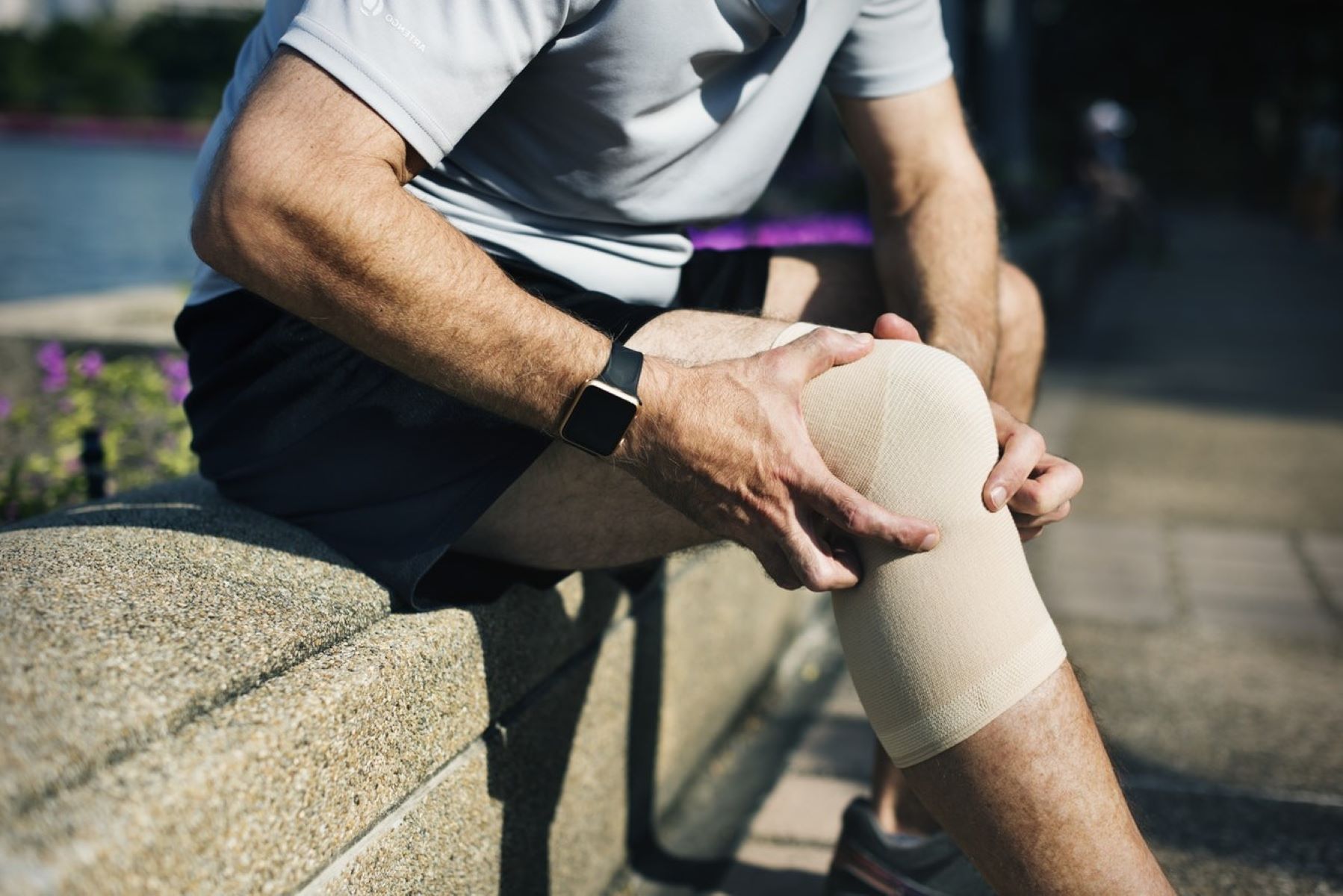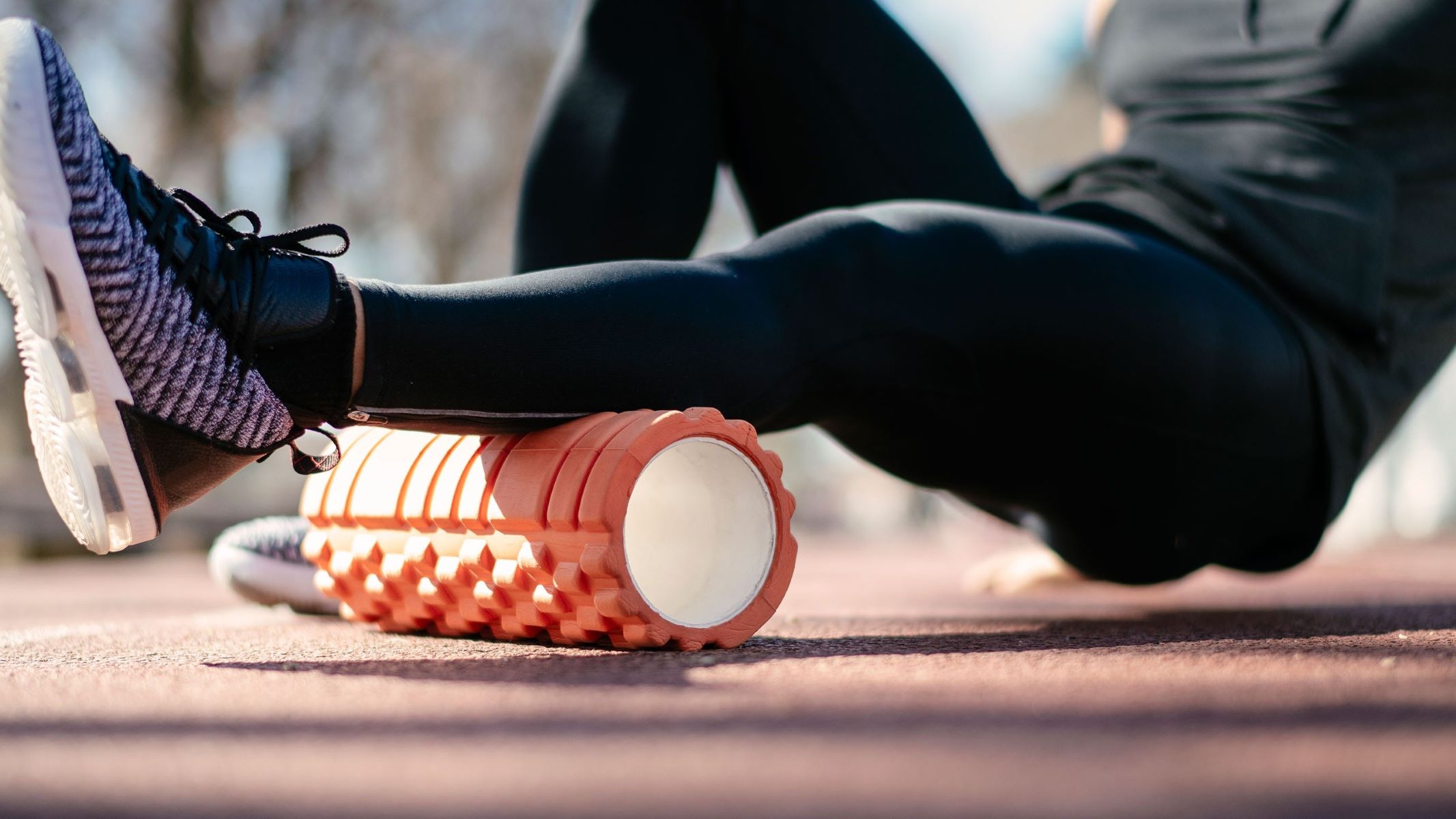Home>Health & Nutrition>Injury Prevention>The Impact Of Running On Muscle Hernia


Injury Prevention
The Impact Of Running On Muscle Hernia
Published: February 25, 2024
Learn how running affects muscle hernia and discover injury prevention strategies to keep your muscles strong and healthy. Explore the impact of running on muscle hernia and effective ways to prevent injuries.
(Many of the links in this article redirect to a specific reviewed product. Your purchase of these products through affiliate links helps to generate commission for Therunningadvisor.com, at no extra cost. Learn more)
Table of Contents
Understanding Muscle Hernia
Muscle hernia, also known as a myofascial hernia, occurs when muscle tissue protrudes through its surrounding fascia, resulting in a visible or palpable bulge. This condition typically arises due to a weakening of the fascia, which can be caused by repetitive strain, trauma, or muscle imbalances. The most common areas for muscle hernias to develop are in the lower leg, thigh, and abdomen, where the muscles are subjected to significant stress and movement.
Muscle hernias can manifest as a result of various factors, including intense physical activity, poor posture, or sudden, forceful movements. Athletes and individuals engaged in high-impact sports, such as running, are particularly susceptible to developing muscle hernias due to the repetitive stress placed on their muscles and fascia.
Understanding the underlying mechanisms of muscle hernia is crucial for both athletes and the general population. By recognizing the potential causes and symptoms of this condition, individuals can take proactive measures to prevent its occurrence and seek appropriate treatment if necessary.
In the context of running, it is essential to be mindful of the potential impact that this activity can have on muscle hernia development. As runners engage in repetitive leg movements and experience continuous muscle contractions, the risk of developing muscle hernias in the lower extremities becomes heightened. Therefore, gaining a comprehensive understanding of muscle hernia is paramount for runners looking to safeguard their musculoskeletal health and overall well-being.
Read more: The Impact Of Running On Meniscal Cysts
The Mechanics of Running
Running is a dynamic and complex physical activity that engages multiple muscle groups and joints in a coordinated manner. Understanding the mechanics of running provides valuable insights into the intricate interplay between the body's musculoskeletal system and the forces exerted during each stride.
Biomechanics of Running
The biomechanics of running encompass the analysis of how the body moves and functions during this high-impact activity. As a runner's foot strikes the ground, a series of biomechanical events unfold. The initial contact phase involves the foot landing and absorbing the impact forces, followed by the midstance phase, during which the body's weight is supported by a single leg. Subsequently, the propulsion phase occurs as the body pushes off the ground to initiate the next stride.
Muscle Engagement
Running necessitates the coordinated effort of various muscle groups to propel the body forward and maintain stability. The primary muscles involved in running include the quadriceps, hamstrings, glutes, calves, and core muscles. These muscles work synergistically to generate propulsive forces, stabilize the body, and absorb shock during each foot strike.
Joint Dynamics
The joints play a pivotal role in facilitating the fluidity and efficiency of running. The ankle joint acts as a shock absorber, the knee joint provides stability and mobility, and the hip joint contributes to power generation and forward propulsion. The synchronized movement of these joints is essential for optimizing running mechanics and minimizing the risk of musculoskeletal injuries.
Read more: The Impact Of Covid On Running
Impact on Muscle Tissues
The repetitive nature of running exposes the muscles and fascia to continuous stress and strain. Each stride subjects the muscles to eccentric and concentric contractions, leading to microtears in the muscle fibers and potential weakening of the surrounding fascia. Over time, this repetitive stress can contribute to the development of muscle imbalances and, in some cases, muscle hernias, particularly in areas prone to high mechanical loads, such as the lower extremities.
Kinetic Chain
Running engages the entire kinetic chain, involving the interconnected relationship between the muscles, tendons, ligaments, and bones. The kinetic chain functions as a unified system, transmitting forces and facilitating movement throughout the body. Any disruptions or weaknesses within the kinetic chain can impact running mechanics and predispose individuals to musculoskeletal issues, including muscle hernias.
Understanding the intricate mechanics of running provides valuable insights into the potential impact of this activity on the musculoskeletal system, particularly concerning the development of muscle hernias. By comprehending the biomechanical intricacies of running, individuals can adopt preventive measures and training strategies to mitigate the risk of muscle hernias and optimize their running performance.
The Relationship Between Running and Muscle Hernia
The relationship between running and muscle hernia is intricately intertwined with the biomechanical demands and physiological responses associated with this high-impact activity. Running, characterized by repetitive leg movements and dynamic muscle engagement, exerts significant stress on the musculoskeletal system, potentially predisposing individuals to the development of muscle hernias.
Impact of Repetitive Stress
The repetitive nature of running subjects the muscles and fascia to continuous stress and strain, particularly in the lower extremities. Each stride involves a complex interplay of muscle contractions, joint movements, and ground reaction forces, leading to microtrauma within the muscle fibers and surrounding connective tissues. Over time, this cumulative stress can contribute to the weakening of the fascia, increasing the susceptibility to muscle hernias, especially in areas prone to high mechanical loads.
Muscle Imbalances and Overuse
Running can lead to the development of muscle imbalances and overuse injuries, which are closely linked to the onset of muscle hernias. As certain muscle groups, such as the quadriceps and calves, are predominantly engaged during running, imbalances in strength and flexibility may arise. These imbalances can exert uneven forces on the fascia, potentially leading to localized weaknesses and herniation of the muscle tissue. Moreover, overuse of specific muscles without adequate recovery can further exacerbate the risk of developing muscle hernias, as the continuous strain may compromise the integrity of the surrounding fascia.
Influence of Running Mechanics
The mechanics of running play a pivotal role in shaping the relationship between this activity and muscle hernias. Factors such as foot strike pattern, stride length, and running surface can impact the distribution of forces throughout the lower extremities. For instance, individuals with a history of improper running mechanics or inadequate footwear support may experience heightened stress on specific muscle groups and fascial structures, potentially increasing the likelihood of muscle hernia development.
Preventive Strategies
Understanding the relationship between running and muscle hernia underscores the importance of implementing preventive strategies to mitigate the associated risks. Incorporating strength training exercises, flexibility routines, and targeted muscle conditioning can help address imbalances and enhance the resilience of the musculature and fascia. Additionally, optimizing running mechanics through gait analysis and footwear assessment can contribute to reducing excessive strain on vulnerable muscle groups, thereby minimizing the potential for muscle hernias.
Holistic Approach to Injury Prevention
Recognizing the intricate relationship between running and muscle hernia underscores the need for a holistic approach to injury prevention. By integrating proper warm-up and cool-down protocols, cross-training activities, and adequate rest intervals into their running regimen, individuals can promote overall musculoskeletal health and reduce the likelihood of developing muscle hernias. Furthermore, seeking professional guidance from physiotherapists or sports medicine specialists can provide valuable insights into injury prevention strategies tailored to the specific demands of running.
In essence, the relationship between running and muscle hernia is multifaceted, influenced by the biomechanical intricacies of running, the impact of repetitive stress, and the interplay of muscle imbalances. By understanding these dynamics and implementing proactive measures, runners can strive to minimize the risk of muscle hernias and sustain their long-term running performance and musculoskeletal well-being.
Preventing Muscle Hernia While Running
Preventing muscle hernia while running necessitates a proactive and multifaceted approach that encompasses targeted strategies to mitigate the risk factors associated with this condition. By integrating preventive measures into their running routine, individuals can safeguard their musculoskeletal health and minimize the likelihood of developing muscle hernias.
Strength and Conditioning
Incorporating comprehensive strength and conditioning exercises into a running regimen is paramount for preventing muscle hernias. Focusing on strengthening the muscles surrounding the hips, thighs, and calves can enhance the overall stability and resilience of the lower extremities. Additionally, targeted core strengthening exercises contribute to improved posture and alignment, reducing the strain on the muscles and fascia during running. Engaging in resistance training, plyometric exercises, and functional movements can effectively address muscle imbalances and fortify the connective tissues, thereby reducing the vulnerability to muscle hernias.
Flexibility and Mobility
Prioritizing flexibility and mobility training is instrumental in preventing muscle hernias while running. Dynamic stretching routines that encompass the major muscle groups involved in running promote optimal range of motion and suppleness, reducing the likelihood of excessive strain on the muscles and fascia. Incorporating yoga, Pilates, or mobility drills into the weekly training schedule can enhance muscular elasticity and mitigate the risk of developing imbalances that may predispose individuals to muscle hernias.
Proper Running Mechanics
Emphasizing proper running mechanics through gait analysis and form correction is pivotal for mitigating the risk of muscle hernias. Ensuring an appropriate foot strike pattern, stride length, and cadence can distribute the forces more evenly throughout the lower extremities, minimizing the localized stress on specific muscle groups. Additionally, wearing supportive and well-fitted footwear tailored to individual biomechanical needs can optimize shock absorption and reduce the impact on the muscles and fascia, thereby contributing to injury prevention.
Gradual Progression and Recovery
Adopting a gradual progression approach in training and allowing for adequate recovery intervals are essential for preventing muscle hernias while running. Avoiding sudden spikes in training intensity and mileage can mitigate the risk of overuse injuries and excessive strain on the muscles and fascia. Implementing structured rest days, cross-training activities, and recovery modalities such as foam rolling and massage therapy supports the body's adaptation to the demands of running, reducing the likelihood of developing muscle hernias due to cumulative stress and fatigue.
Holistic Injury Prevention
Taking a holistic approach to injury prevention by addressing nutritional needs, hydration, and sleep patterns is integral to mitigating the risk of muscle hernias. Adequate hydration and nutrition support optimal muscle function and tissue repair, while sufficient rest and sleep contribute to overall recovery and resilience. By prioritizing holistic well-being, runners can fortify their musculoskeletal health and minimize the susceptibility to muscle hernias, thereby sustaining their long-term running performance.
In essence, preventing muscle hernia while running encompasses a comprehensive and proactive strategy that integrates strength and conditioning, flexibility, proper running mechanics, gradual progression, and holistic well-being. By prioritizing these preventive measures, runners can mitigate the risk factors associated with muscle hernias and foster a resilient and sustainable running experience.
Managing Muscle Hernia for Runners
Managing muscle hernia for runners requires a tailored approach that encompasses targeted interventions to address the underlying factors contributing to this condition. For runners who have been diagnosed with or are experiencing symptoms of muscle hernia, proactive management strategies are essential to facilitate recovery, minimize discomfort, and support a safe return to running activities.
Professional Evaluation and Diagnosis
Seeking a comprehensive evaluation and accurate diagnosis from a qualified healthcare professional, such as a sports medicine physician or orthopedic specialist, is the initial step in managing muscle hernia for runners. Through a thorough physical examination, imaging studies, and diagnostic tests, healthcare providers can precisely assess the extent of the muscle hernia, identify any associated complications, and develop a personalized treatment plan tailored to the individual's needs.
Multidisciplinary Treatment Approach
Engaging in a multidisciplinary treatment approach involving physiotherapists, sports rehabilitation specialists, and other allied healthcare professionals is instrumental in managing muscle hernia for runners. Collaborative care enables the implementation of targeted interventions, including manual therapy, therapeutic exercises, and modalities such as ultrasound or electrical stimulation, aimed at promoting tissue healing, restoring functional mobility, and addressing any underlying biomechanical imbalances contributing to the muscle hernia.
Individualized Rehabilitation Protocols
Developing individualized rehabilitation protocols that integrate progressive strengthening exercises, flexibility training, and functional movement patterns is crucial for runners managing muscle hernia. These tailored rehabilitation programs focus on restoring muscular strength, optimizing flexibility, and enhancing neuromuscular control to support the affected muscle and surrounding structures. Additionally, targeted core stabilization exercises and proprioceptive training contribute to improved dynamic stability and resilience during running-related activities.
Gradual Return to Running
Facilitating a gradual and structured return to running is paramount in managing muscle hernia for runners. Healthcare professionals collaborate with individuals to develop a phased running program that prioritizes controlled progression, monitoring of symptoms, and modification of training variables as needed. By gradually reintroducing running activities while closely monitoring the body's response, runners can mitigate the risk of exacerbating the muscle hernia and promote a sustainable return to their preferred form of exercise.
Biomechanical Optimization and Injury Prevention
Addressing biomechanical inefficiencies and implementing injury prevention strategies are integral components of managing muscle hernia for runners. Gait analysis, footwear assessment, and corrective exercise techniques can help optimize running mechanics, reduce excessive stress on vulnerable muscle groups, and minimize the likelihood of recurrent muscle hernias. Furthermore, integrating comprehensive injury prevention measures, such as strength and conditioning routines, flexibility training, and cross-training activities, supports long-term musculoskeletal health and resilience.
Psychological Support and Education
Providing psychological support and education to runners managing muscle hernia is essential for fostering a positive mindset, promoting adherence to rehabilitation protocols, and facilitating a holistic recovery experience. Educating individuals about the nature of muscle hernias, the importance of adherence to treatment plans, and strategies for preventing future occurrences empowers runners to actively participate in their recovery journey and make informed decisions regarding their training and running activities.
In essence, managing muscle hernia for runners entails a comprehensive and individualized approach that encompasses professional evaluation, multidisciplinary care, tailored rehabilitation protocols, gradual return to running, biomechanical optimization, and psychological support. By addressing the multifaceted aspects of muscle hernia management, runners can navigate their recovery journey with confidence, resilience, and a focus on long-term musculoskeletal well-being.










